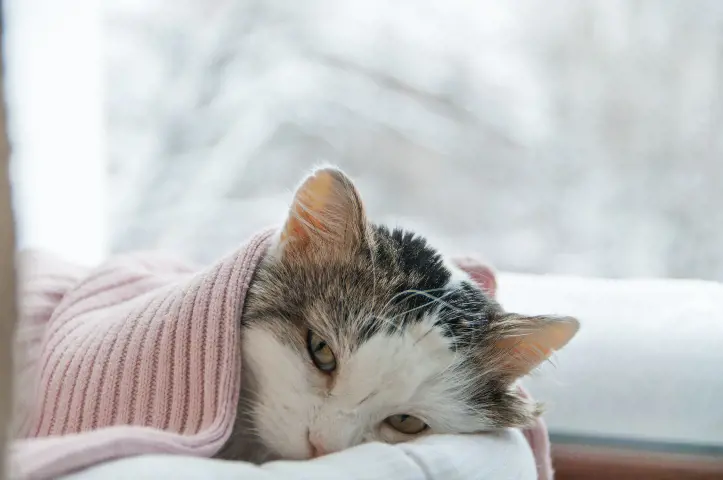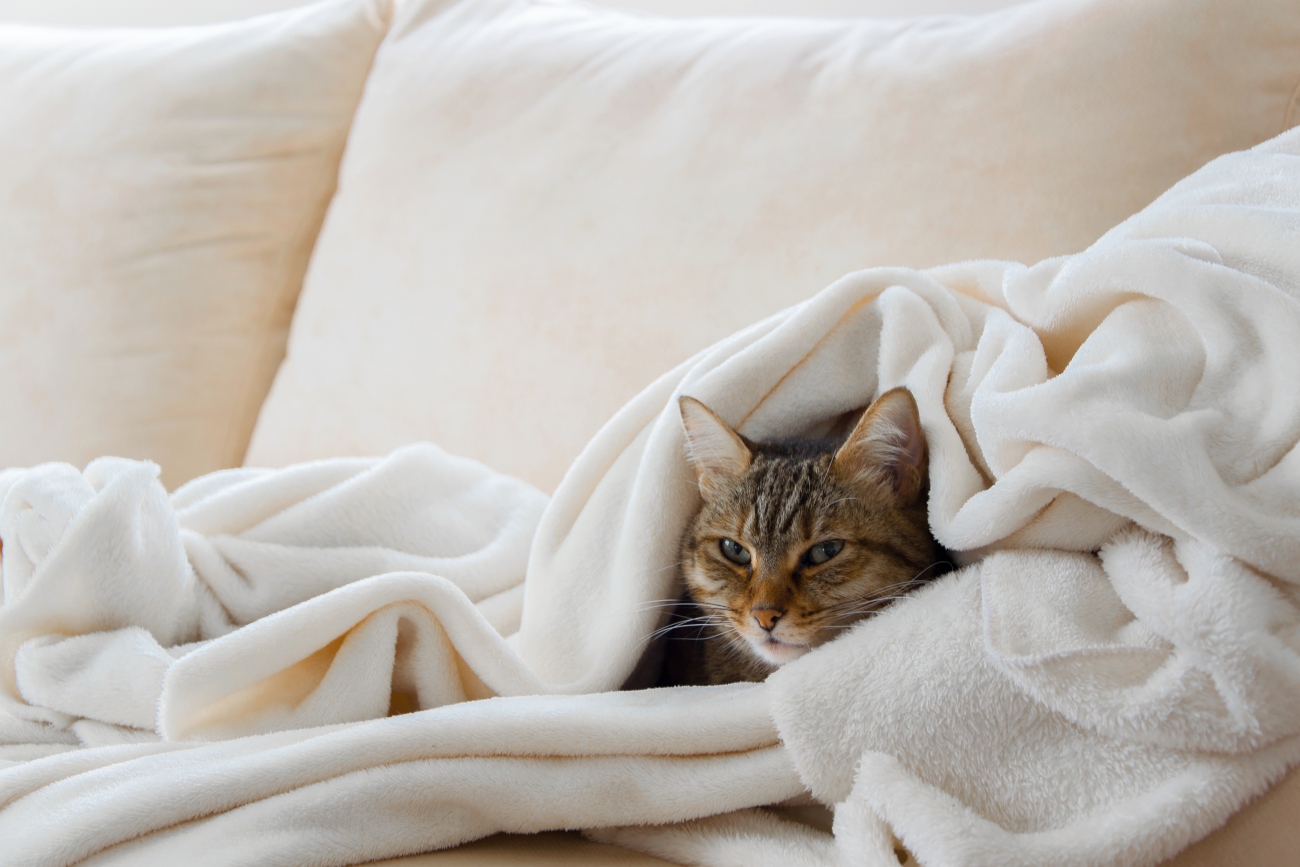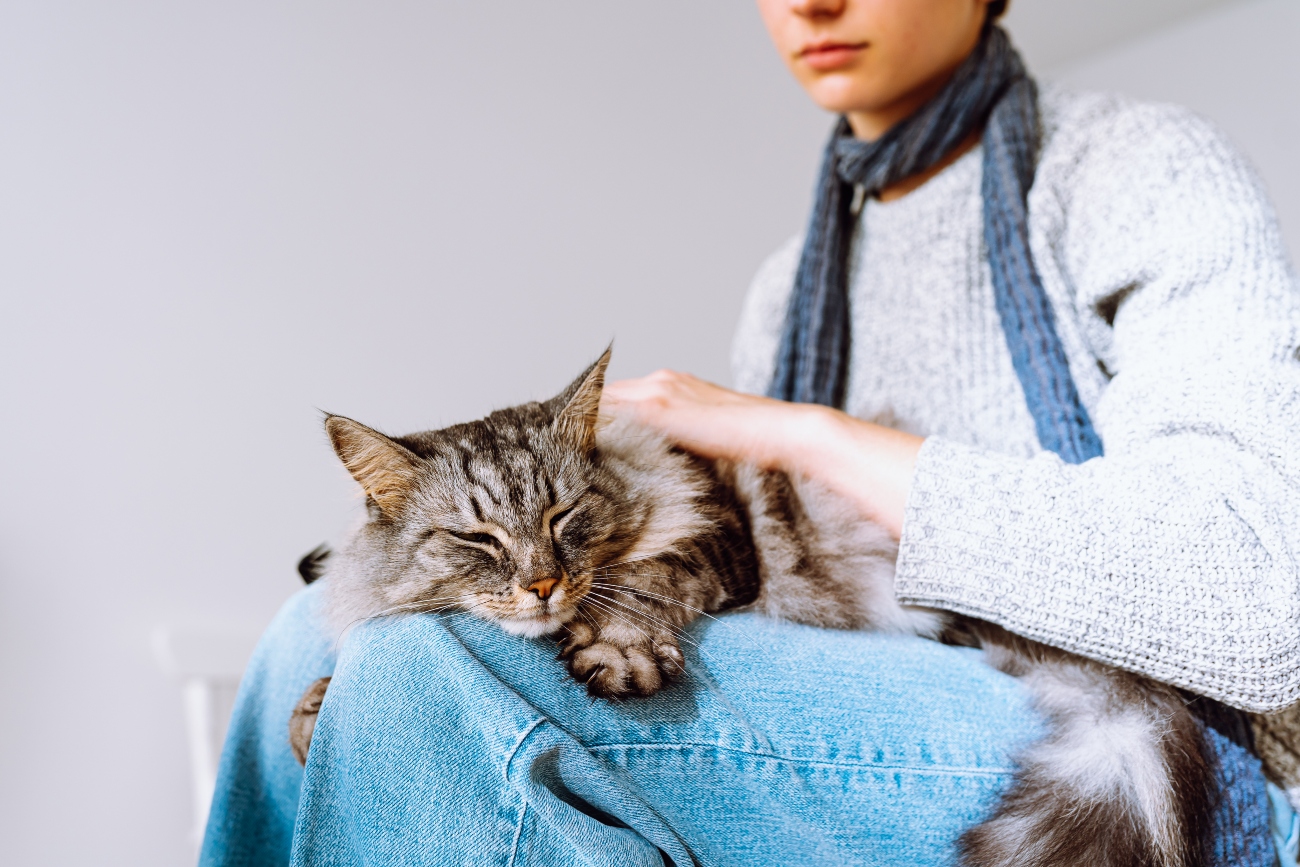Understanding common cat diseases
27th November, 2023

As cat owners, it's important to familiarise ourselves with the common cat diseases that our feline companions are likely to encounter. Whether you are in the UK or elsewhere, being aware of these diseases not only helps in early detection but also in taking necessary precautions to prevent them.
Certain conditions could prove deadly, underscoring the importance of knowledge. In our article, we will dissect prevalent feline illnesses - their signs, origins, therapies, and avoidance strategies.
Our aim is to equip pet parents with vital insights and tips – a testament to our commitment in safeguarding your pets' well-being.
Remember: Information is your best defence against the unforeseen!
Feline infectious peritonitis (FIP)
Feline Infectious Peritonitis (FIP) is a potentially fatal disease caused by the Feline Coronavirus (FCoV). FCoV is a common and contagious virus in cats, typically spread through their faeces.
While most cats show no symptoms, and if they do, it's usually limited to mild diarrhoea, the virus can sometimes mutate into FIP, which is almost always fatal.
Symptoms of FIP
FIP is challenging to diagnose, but most cats with the virus will exhibit lethargy, lose their appetite, and have a fever. There are two types of the virus - wet FIP and dry FIP.
In cats suffering from the earlier condition, excessive fluid accumulates in the abdomen or chest, resulting in noticeable swelling.
Cats experiencing dry FIP exhibit less fluid retention but may show signs of reduced appetite, elevated body temperature, and potential vision impairments.
Treatment and prevention of FIP
There is currently no definitive cure for FIP. However, there are now some treatment options available, albeit very expensive, such as remdesivir injections and GS-441524, an oral tablet.
Sadly, these treatment options are not universally accessible yet.
Cancer in cats
Cancer in cats is a class of diseases characterised by uncontrolled cell growth. This can lead to the development of tumours and can spread to other parts of the body.
The disease can be localised (confined to one area) or generalised (spread throughout the body).
Types and causes of cancer in cats
Cancer is a multifactorial disease, meaning it has no known single cause. However, both hereditary and environmental factors can lead to the development of cancer in cats.
Some of the common types of cancer in cats include Squamous cell carcinoma and Lymphosarcoma (LSA).
Symptoms and treatment of cancer in cats
- Symptoms of cancer in cats may include:
- Weight loss
- Lumps
- Persistent sores
- Abnormal discharge from any part of the body
- A marked change in behaviour
Treatment options vary and depend on the type and stage of cancer. Common treatments include surgery, chemotherapy, radiation, and immunotherapy or a combination of therapies. Early detection is crucial for successful treatment.
For more tips on how to spot cancer in cats, check out a blog elsewhere on our site.
Diabetes in cats

Diabetes in cats is a complex disease caused by either a lack of insulin or an inadequate response to insulin.
After a cat eats, their digestive system breaks down food into various components, including glucose, which is carried into their cells by insulin.
If a cat does not produce or cannot utilise insulin normally, their blood sugar levels elevate, leading to hyperglycemia.
Symptoms and treatment of diabetes in cats
If you are unable to recognise the signs of diabetes, here are few symptoms of feline diabetes which may include:
- Increased or decreased appetite
- Weight loss
- Excessive thirst
- Increased urination
- Unusually sweet-smelling breath
- Lethargy
Treatment of diabetes is based on the severity of the disease and can include insulin injections, glucose tests, a high-fibre diet, or oral medication.
Feline immunodeficiency virus (FIV)
Feline Immunodeficiency Virus (FIV) is a virus that severely weakens a cat's immune system, making the cat susceptible to various secondary infections.
Infected cats can lead relatively comfortable lives for months to years before the disease reaches its chronic stages.
Symptoms and treatment of FIV
Infected cats with FIV may not show symptoms until years after the initial infection. Once symptoms do develop, however, they may continually progress.
Symptoms include:
- Enlarged lymph nodes
- Fever
- Weight loss
- Poor appetite
- Diarrhoea
- Abnormal appearance or inflammation of the eye
Feline calicivirus
Feline Calicivirus is a common cause of upper respiratory infections and oral disease in cats. The virus infects cats across the globe and can cause disease in both domestic and exotic cat species.
Symptoms and treatment of calicivirus
Calicivirus causes typical clinical signs of an upper respiratory infection such as:
- Sneezing
- Nasal congestion
- Conjunctivitis
- Discharge from the nose or eyes
Other non-specific signs of an upper respiratory infection include:
- Anorexia
- Lethargy
- Fever
- Enlarged lymph nodes
- Squinting
Feline leukaemia virus (FeLV)
Feline Leukaemia Virus (FeLV) is a transmittable RNA retrovirus that can severely inhibit a cat's immune system.
It is one of the most commonly diagnosed causes of disease and death in domestic cats.
Symptoms and treatment of FeLV
FeLV, or Feline Leukaemia Virus, acts adversely on a cat's immune system, making them more prone to various infections and illnesses such as anaemia, renal disease, and lymphosarcoma - a deadly cancer that affects the lymphatic system.
Kittens and cats under one year of age are particularly vulnerable to this virus. The information shared here aims at empowering you with knowledge and guidance for better pet care because we're all about maintaining the health of our furry friends.
Heartworm in cats
Heartworm is increasingly being recognised as an underlying cause of health problems in domestic cats.
Cats are an atypical host for heartworms. Despite its name, heartworm primarily causes lung disease in cats.
Symptoms and treatment of heartworm
Heartworm in cats is a complex disease, and the symptoms can be varied. Some cats may show no symptoms, but others may exhibit signs such as:
- Coughing
- Asthma-like attacks
- Periodic vomiting
- Lack of appetite
- Weight loss
Influenza A (H5N1) in cats
Influenza A (H5N1) is a strain of the flu virus that can infect cats.
Though rare, cats can contract the virus through direct or indirect contact with infected birds or from ingesting meat of infected birds.
Symptoms and treatment of influenza A (H5N1)
Cats infected with the H5N1 virus show symptoms such as respiratory distress, conjunctivitis, and neurological signs.
Treatment involves supportive care, including fluid therapy and anti-inflammatory and antiviral drugs.
What is the #1 killer of cats?
The leading cause of death in cats, particularly in indoor cats, is kidney disease. This disease, chronic kidney disease (CKD), is a progressive condition that often goes undetected until it has advanced significantly.
It is characterised by a gradual decrease in kidney function, which leads to a buildup of toxins in the body. The exact cause of CKD is often unknown, but it can be related to ageing, genetics, and previous health issues.
The best way to prevent and manage CKD is through regular veterinary check-ups, a balanced diet, and maintaining a healthy weight for your cat.
Preventing common cat diseases

Preventing common cat diseases often involves a mix of good hygiene practices, a healthy lifestyle, and regular veterinary care. Here are some general tips for preventing common cat diseases:
- Keep your cat indoors: Keeping your cat indoors minimises their exposure to infectious diseases, harmful substances, and dangerous situations.
- Vaccination: Regular vaccinations can protect your cat from many common diseases.
- Regular vet check-ups: Regular veterinary check-ups can help detect diseases early and keep your cat in good health.
- Good nutrition: A balanced diet can boost your cat's immune system and keep your cat healthy.
- Hygiene: Regular grooming and cleaning of your cat's environment can help prevent the spread of diseases.
Pet insurance for your cat
Ensuring the health and welfare of your cat doesn't have to be daunting. With cat insurance, you may be able to cover the costs of treating these common cat diseases.
Cat insurance can provide peace of mind knowing that should your cat fall ill, you are financially prepared to provide the best care possible.
To get a cat insurance quote for your furry friend, you can get a quote through our website. If you would like to talk to one of our cat insurance team, you can get in touch with us on 0330 102 5748.
In conclusion, understanding common cat diseases is essential for every cat owner. It enables you to recognise symptoms early, seek appropriate treatment, and take steps to prevent these diseases.
Remember, the key to your cat's good health is a combination of a balanced diet, regular exercise, scheduled vaccinations, and routine veterinary care.
Helpful Pages
Recent Posts
Pet Insurance Quote
- 98% claims paid *
- Claims paid directly to vets
- 24/7 vet video consultations
- Interest free monthly payments




